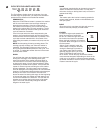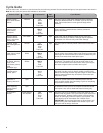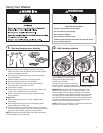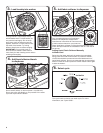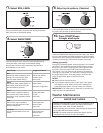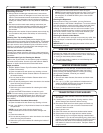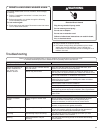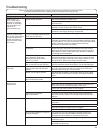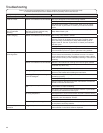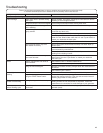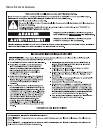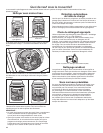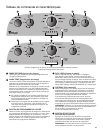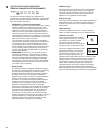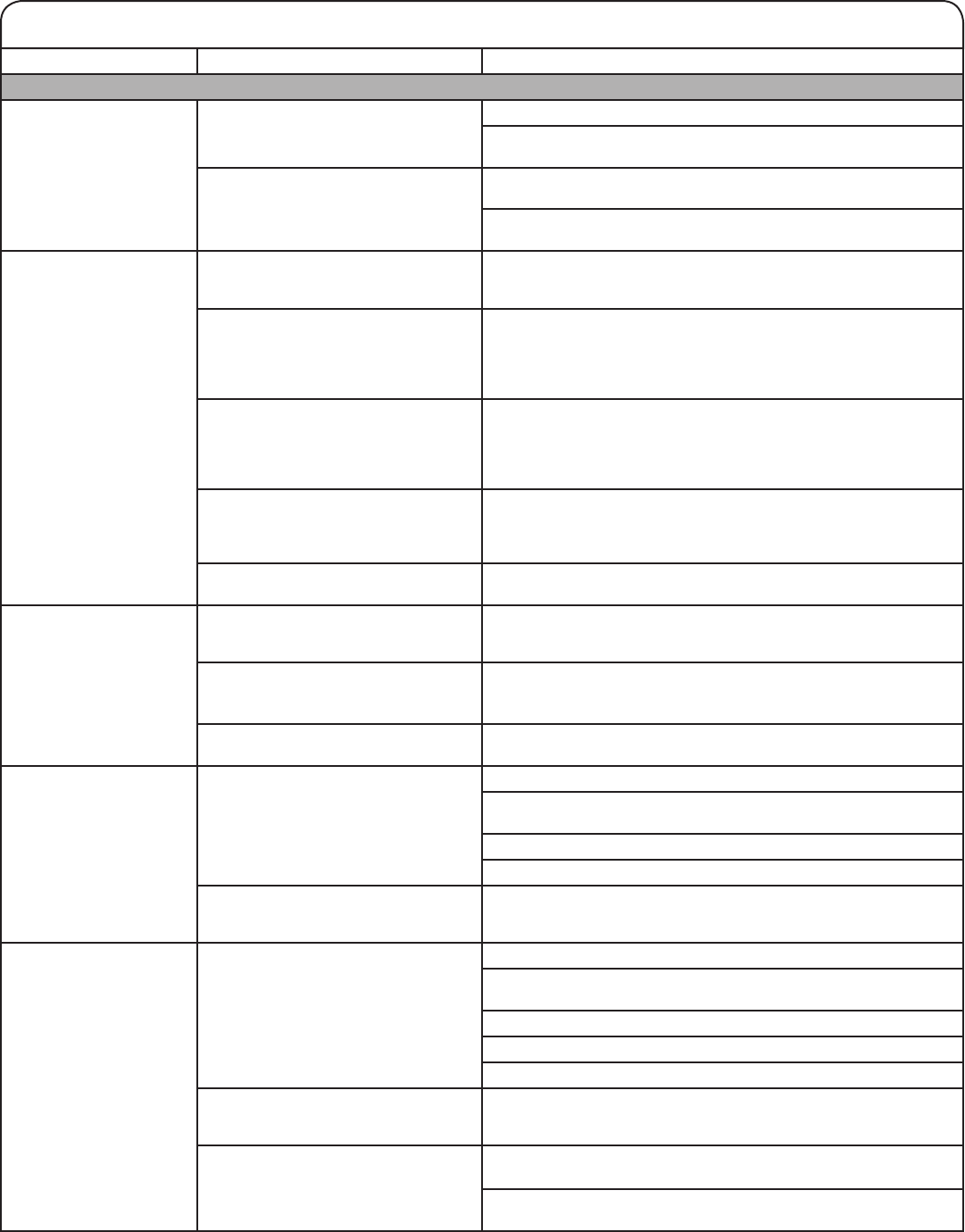
13
Troubleshooting
If you experience Possible Causes Solution
Washer not performing as expected (cont.)
Washer won’t run
or ll, washer stops
working or wash light
remains on (indicating
that the washer was
unable to ll
appropriately) (cont.)
Normal washer operation. Lid must be closed for washer to run.
Washer will pause during certain phases of cycle. Do not
interrupt cycle.
Washer may be tightly packed. Remove several items, rearrange load evenly in basket, and add
detergent. Close lid and press START/Pause.
Do not add more than 1 or 2 additional items after cycle has
started to avoid tightly packing or unbalancing.
Washer not draining/
spinning, loads are still
wet, or spin light remains
on (indicating that the
washer was unable to
pump out water within
10 minutes)
Small items may have been caught
in pump or between basket and tub,
which can slow draining.
Empty pockets and use garment bags for small items.
Use a cycle with a low spin speed. Cycles with lower spin speeds remove less water than cycles
with high spin speeds. Use the recommended cycle/spin speed
for your garment. To remove extra water in the load, select Drain
& Spin. Load may need to be rearranged to allow even
distribution of the load in the basket.
The washer may be tightly packed or
unbalanced.
Tightly packed or unbalanced loads may not allow the washer
to spin correctly, leaving the load wetter than normal. Evenly
arrange the wet load for balanced spinning. Select the Drain &
Spin cycle to remove excess water. See “Using Your Washer”
for loading recommendations.
Check plumbing for correct drain
hose installation. Drain hose
extends into standpipe farther
than 4.5" (114 mm).
Check drain hose for proper installation. Use drain hose form
and securely attach to drainpipe or tub. Do not tape over drain
opening. Lower drain hose if the end is higher than 96" (2.4 m)
above the oor. Remove any clogs from drain hose.
Too much detergent causing suds to
slow or stop draining and spinning.
Always measure and follow detergent directions for your load. To
remove extra suds, select Rinse & Spin. Do not add detergent.
Dry spots on load
after cycle
High speed spins extract more
moisture than traditional top-load
washers.
The high spin speeds combined with air ow during the nal
spin can cause items near the top of the load to develop dry
spots during the nal spin. This is normal.
Washer may be tightly packed. Use Bulky Items/Sheets or Deep Water Wash cycle for higher
water ll. See “Cycle Guide” to match your load with the best
cycle.
Added extra garments to the load
after the sensing/ll phase.
Add only 1 or 2 additional garments after washer has started.
Incorrect or wrong
wash or rinse
temperatures
Check for proper water supply. Make sure hot and cold inlet hoses are not reversed.
Both hoses must be attached to both washer and faucet, and
have both hot and cold water owing to inlet valve.
Check that inlet valve screens are not clogged.
Remove any kinks in hoses.
Energy saving controlled
wash temperatures.
This washer uses cooler wash and rinse water temperatures
than your previous washer. This includes cooler hot and warm
washes.
Load not rinsed Check for proper water supply. Make sure hot and cold inlet hoses are not reversed.
Both hoses must be attached and have water owing to the
inlet valve.
Both hot and cold water faucets must be on.
Inlet valve screens on washer may be clogged.
Remove any kinks in the inlet hose.
Not using HE detergent or using too
much HE detergent.
The suds from too much detergent can keep washer from
operating correctly. Always measure detergent and follow
detergent directions based on load size and soil level.
Washer not loaded as recommended. The washer is less efcient at rinsing when tightly packed. Add
2 Rinses to cycle.
Load garments in loose heaps evenly around the basket wall.
Load with dry items only.
First try the solutions suggested here or visit our website at www.whirlpool.com/product_help -
In Canada www.whirlpool.ca for assistance and to possibly avoid a service call.



